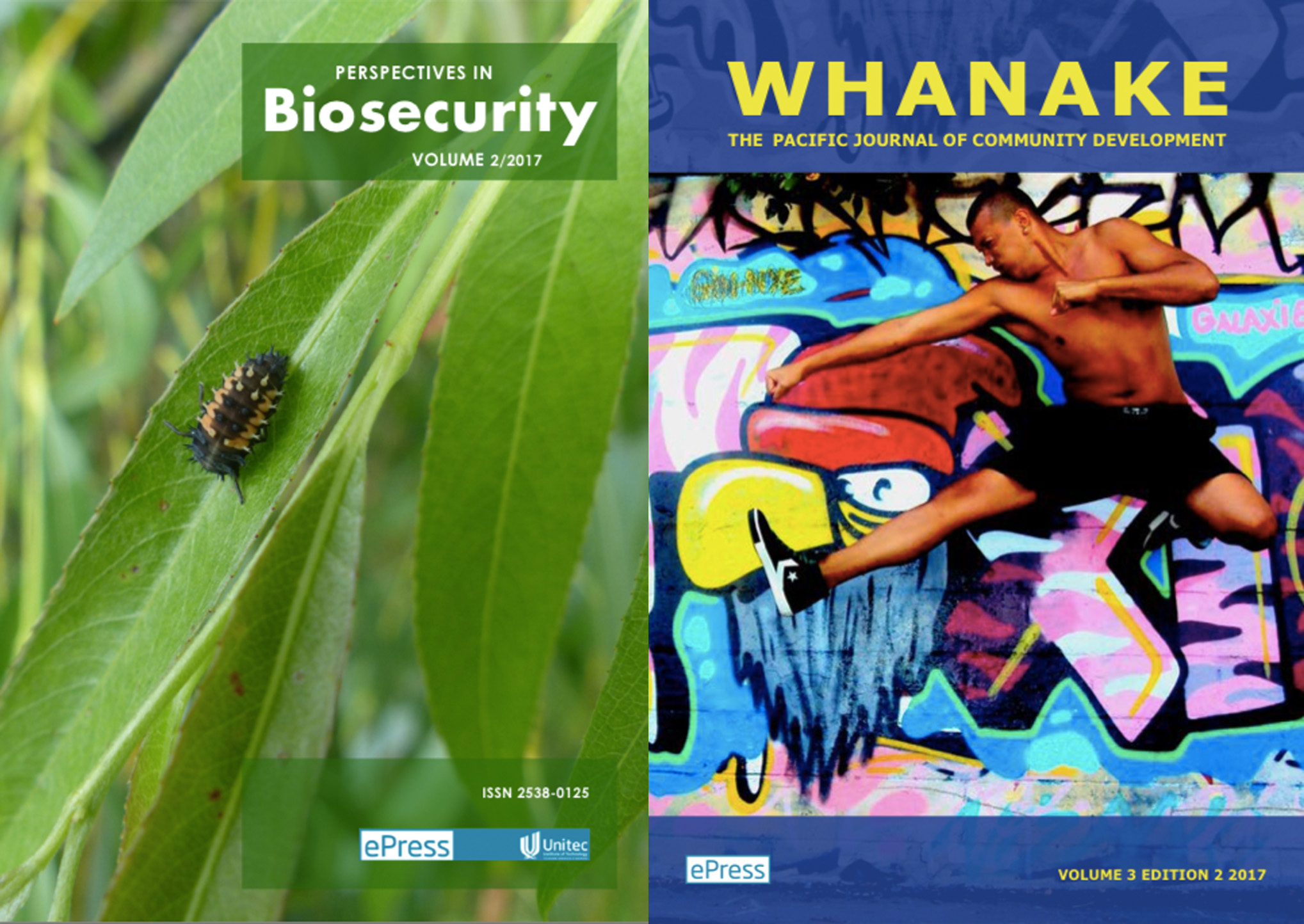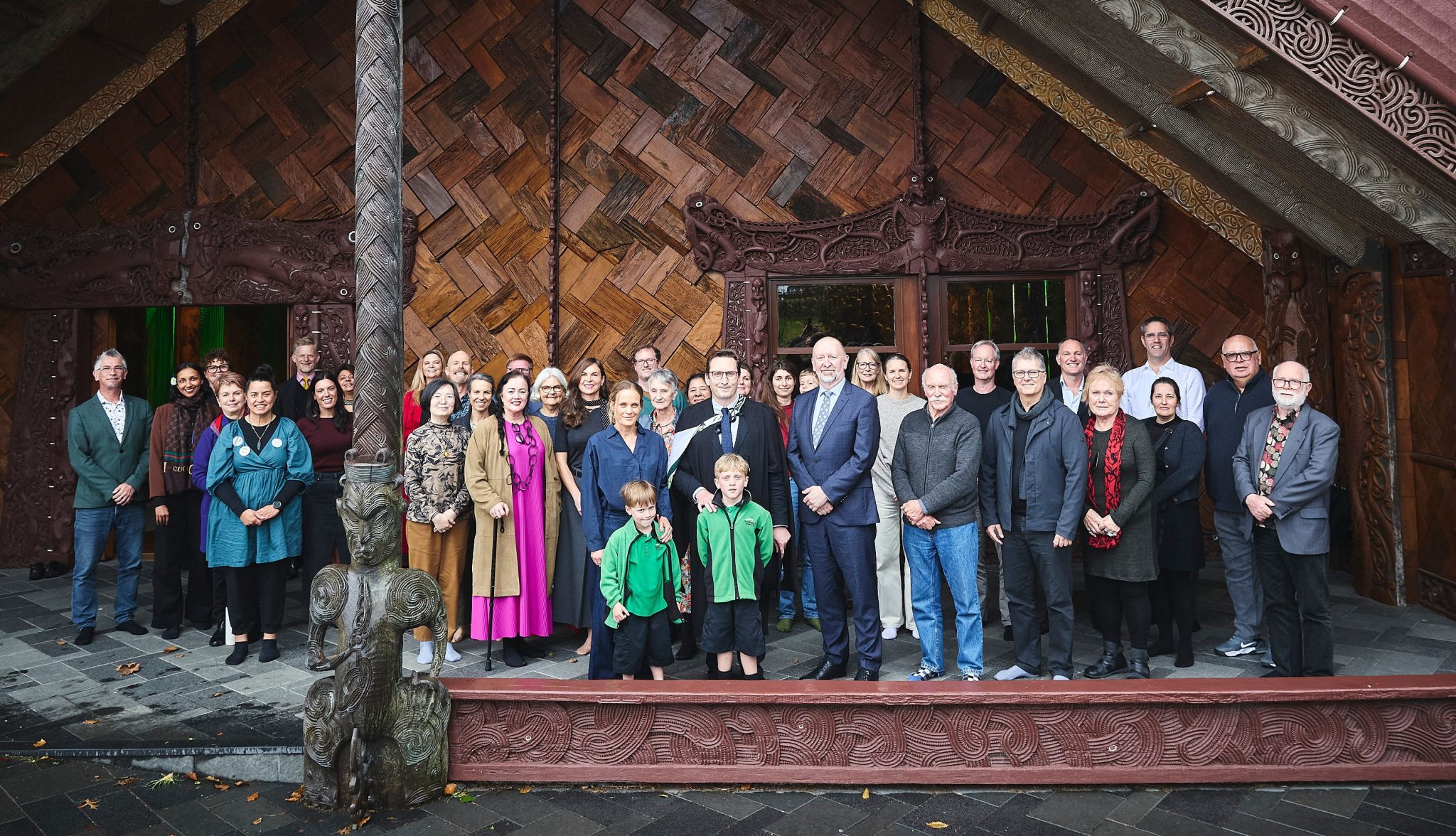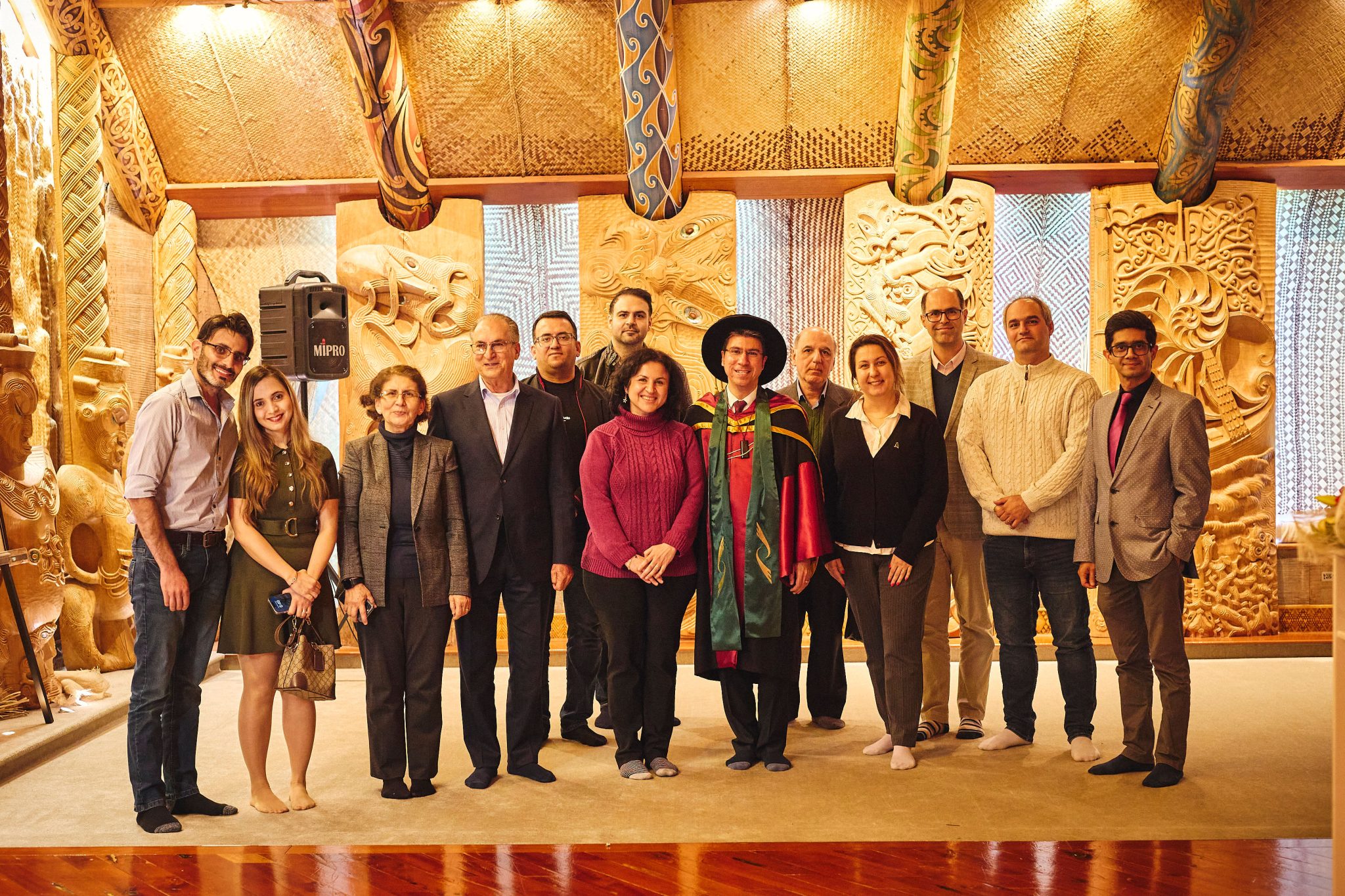How could myrtle rust affect indigenous fauna if the disease becomes established in New Zealand? What have today’s creative industries students found when analysing everything from film and music to politics? How can we achieve gender equality in overseas disaster management?
Find the answers to these wide-ranging questions, and enough other reading to keep you occupied for hours, in the latest research published by Unitec’s ePress. The not-for-profit online publisher has been publishing peer-reviewed, quality-assured academic work by Unitec staff, students and associates since 2011 – and their goal is to be a source of innovation within the online, open-access publishing world.
So find a topic that takes your fancy and dive in… we guarantee your horizons will be expanded!
Perspectives in Biosecurity, Issue 2, 2017
Edited by Dan Blanchon and Mel Galbraith. This multi-disciplinary e-journal covers all aspects of the field of biosecurity. This issue examines the impact of myrtle rust on indigenous fauna, and how art can promote conversation and debate around biosecurity.
Pūrātoke Journal of Undergraduate Research in the Creative Arts and Industries, Issue 1, 2017
Edited by Scott Wilson and Samuel Holloway. This is the first issue of this biannual journal, in which high-achieving undergraduate researchers across the creative arts and industries can publish their work. The work of 11 researchers is featured in this issue.
Whanake: The Pacific Journal of Community Development, Volume 3, Issue 2, 2017
Edited by Gavin Rennie and John Stansfield. The biannual digital journal is for practitioners and academics who love community development. This issue features papers on white fragility in West Auckland; social work education in Vietnam; gender equality in disaster management; the future of state housing in Aotearoa; and local food solutions on Waiheke Island.
Spaces and Pedagogies: New Zealand Tertiary Learning and Teaching Conference 2017 Proceedings
Edited by Lucy Patston and Simon Nash. The event explored how the spaces that we teach in – real or virtual, cultural, social, commercial or otherwise – could be best designed for learners. Conference strands delved into the design of learning environments and learning practices.
(NB: Congratulations to Simon Nash, who was recently appointed Director – Ako. In this new position, he will lead the strategic enhancement of teaching and learning, and ensure there is an integrated approach to providing academic support for teachers and learners.)
File to Factory: A case study of automated prefabrication house-building methods for small-to-medium enterprises
By Yusef Patel.
The Sustainable Whānau Challenge 2016: A multi-factor assessment tool to rank lifestyle shifts towards sustainability based on predicted impact
By Paola Trapani et al.
The Effect of Airtightness on Indoor Air Quality in Timber Houses in New Zealand
By Terri-Ann Berry et al.
Change and Development in Glen Eden, 2017
By David Haigh, David Kenkel and Kate Doswell.
Counsellor Clients as Insider Experts in a School Community
By Nigel Pizzini and Helen Gremillion.
Delirium assessment and management: A qualitative study on aged-care nurses’ experiences
By Ray Jauny and John Parsons.




